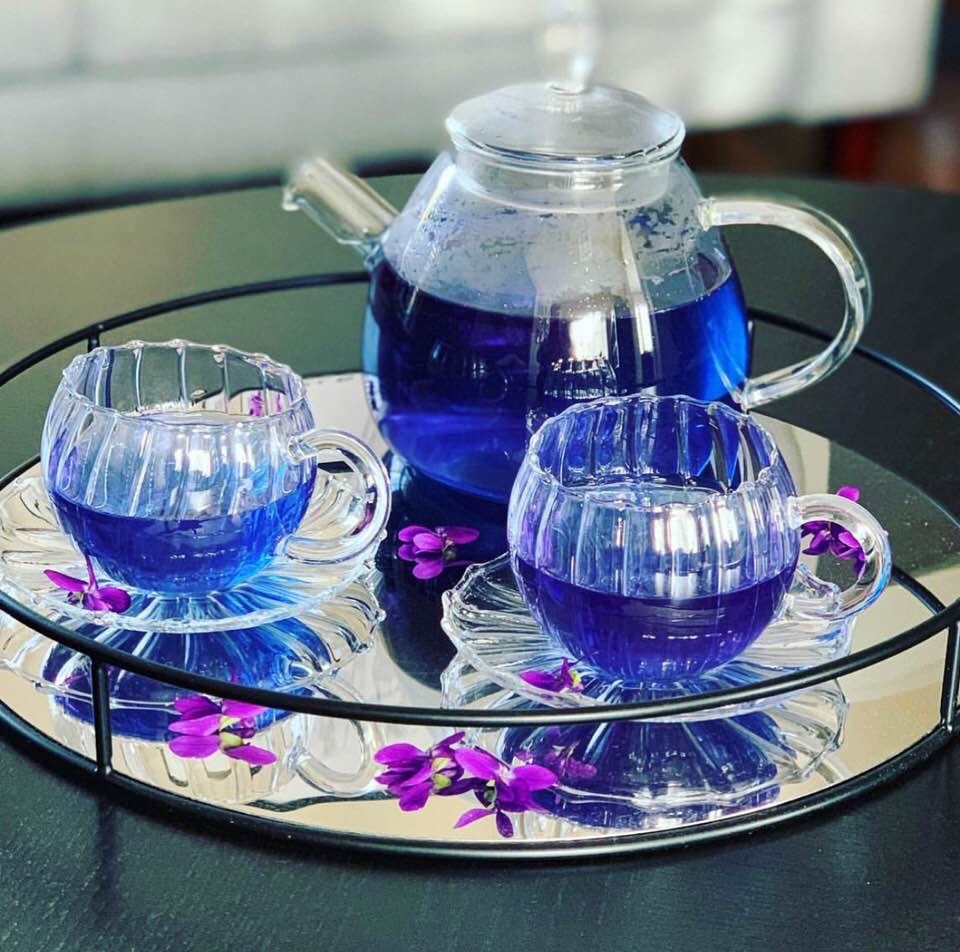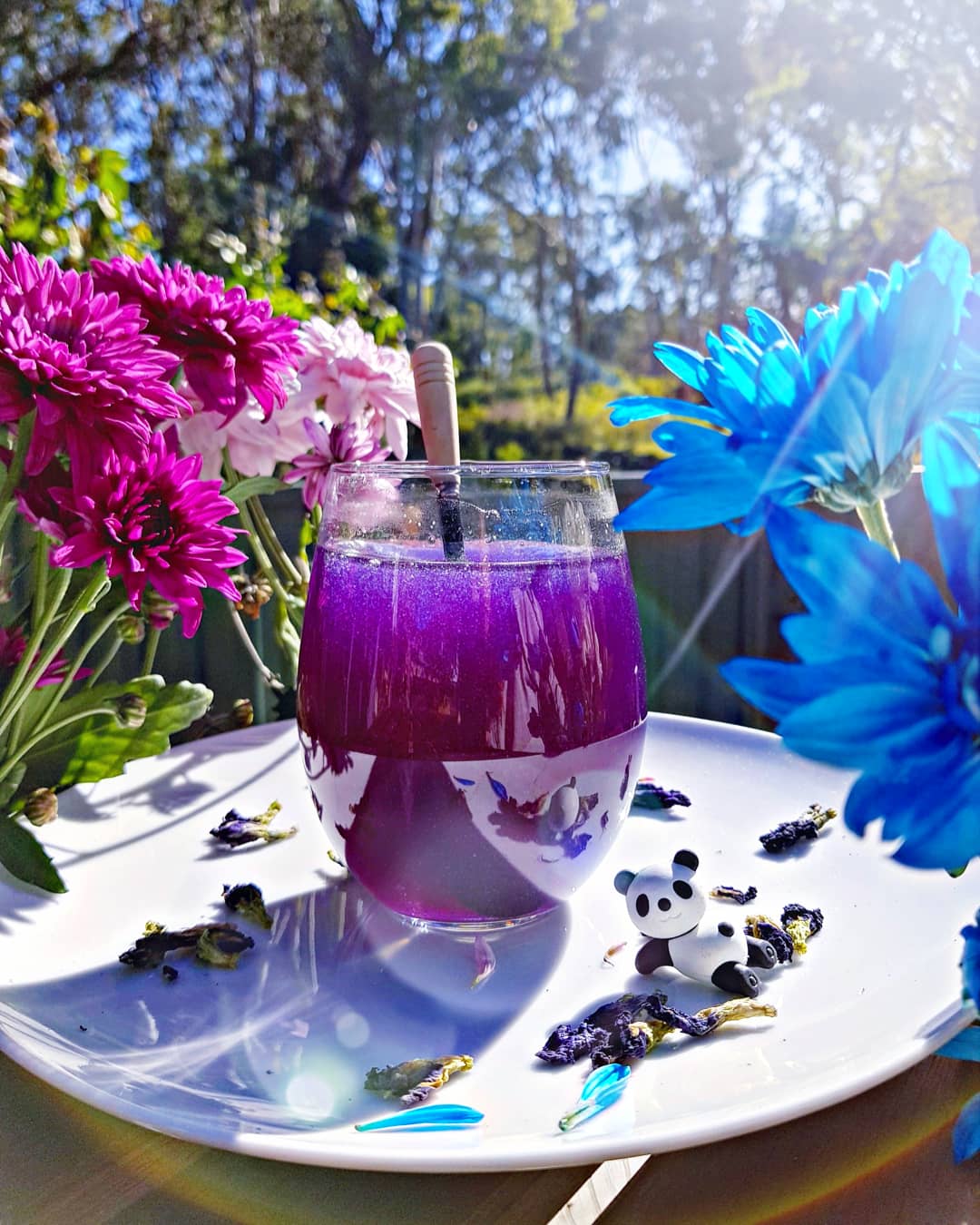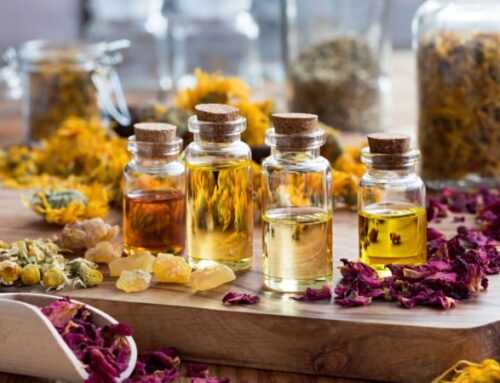Organic Blue Butterfly Pea Tea
The Blue Butterfly Pea (also scientifically referred to as Clitoria Ternatea) is noted for its bright blue edible flowers. Aside from its many culinary uses, the blue butterfly pea vine has been used in Ayurveda as well as traditional Asian and Middle Eastern medicine for centuries. Its health benefits including improved memory, balanced mood, and a healthy immune system are increasingly supported by modern science.
What does Organic Blue Butterfly Pea Tea do?
This potent blue butterfly Pea Tea powder is known to promote vitality and healthy aging. It is chock full of antioxidants, including proanthocyanidin (which supports skin collagen and elasticity) and anthocyanin (supports hair and eye health). Both ingredients help promote the overall healthy life cycle of your cells.
Blue Butterfly powder is a notable nerve tonic and provides support to the digestive, circulatory, and central nervous systems. The key ingredient in this tea is the Butterfly Pea flower which is native to South East Asia. This ingredient has beneficial anthocyanins (which provide the blue color) and has a variety of health benefits such as:
Health Benefits
- Eyes: The presence of the antioxidant, proanthocyanin, helps to improve eyesight by increasing blood flow in the capillaries of the eyes which also allows the eyes to adjust to changes in light and improves vision. The blue butterfly pea vine flowers have been shown to effectively prevent cataracts and glaucoma, correct blurred vision, and reverse retinal damage as well as soothe inflamed and tearing eyes.
- Hair: The blue butterfly vine flower, rich in bioflavonoids, has been used traditionally to promote hair growth, thicken the hair, and reduce greying of the hair.
- Skin: Antioxidants in blue butterfly pea flower stimulate collagen and elastin synthesis helping to rejuvenate the skin, and reduce wrinkles and other effects of aging skin.
- Aphrodisiac: Traditionally used as an aphrodisiac, particularly for women and used to treat problems associated with menstruation as well as leucorrhoea (white vaginal discharge).
- Brain: Nootropic – enhances cognitive functions including heightening intelligence and enhancing memory via acetylcholine localised to the hippocampus.
- Stress: A known Anxiolytic – reduces stress and anxiety – calming effect. Relaxes smooth vascular muscle aiding blood flow.
- Pain relief: Analgesic – helps to relieve pain to the extent it is used as a local anesthetic.
- Diuretic: Promotes excretion of water (urination) which decreases blood volume thereby lowering blood pressure, also used for fasting but typically for temporary weight loss.
Other health benefits include:
- Anti-inflammatory – the deep blue flowers contain flavonoid pigments like blueberries, acai berry, mangosteen rind, etc. that protect the plant. When you inject the flower, the effect is remarkably like the anti-inflammatory effect of the plant in nature.
- Aids diabetic activity by inhibiting glucose intake from the diet.
- Noted anti-cancer and anti-tumor abilities resulting from cyclotides that cause cell death by disrupting cell membrane integrity.
- Anti-pyretic –reduces fever by dilating the blood vessels just beneath the skin which increases blood flow near the surface of the skin where it can be more easily cooled by the air.
- Loaded with antioxidants that help boost circulation and collagen production and prevent premature aging. * It’s been used in traditional Ayurvedic medicine as a memory enhancer, a stress alleviator, to lift the mood, and it is believed to balance blood sugar levels.
- Strengthens the hair for healthy hair growth/prevent hair loss and greying.
Scientific Support & Reference Citations
References lists 22 scientific references which provide support for the benefits of Clitoria principissae:
1. Rotblatt M, Ziment I 2002 – Evidence-based Herbal Medicine. Hanley & Belfus, Philadephia.
2. Chang ST, Wu JH, Wang SY, Kang PL, Yang NS, Shyur LF 2001. Antioxidants activity extracts from Acacia confusa bark and heartwood. J Agric Chem 3420-3424
3. Jain NN, et al Clitoria ternatea and the CNS. Pharmacol Biochem Behav. (2003)
4. Rai KS, et al Clitoria ternatea root extract enhances acetylcholine content in rat hip-pocampus. Fitoterapia. (2002)
5. Malik J, Karan M, Vasisht K Nootropic, anxiolytic and CNS-depressant studies on different plant sources of shankhpushpi .Pharm Biol. (2011)
6. Sethiya NK, et al An update on Shankhpushpi, a cognition-boosting Ayurvedic med-icine. Zhong Xi Yi Jie He Xue Bao. (2009)
7. Aulakh GS, Narayanan S, Mahadevan G Phyto – chemistry and pharmacology of shankapushpi – four varieties. Anc Sci Life (1988)





